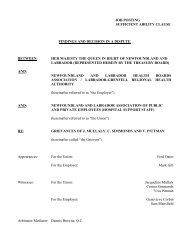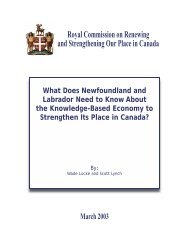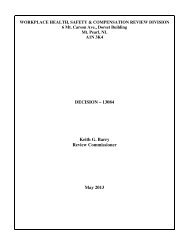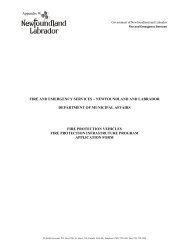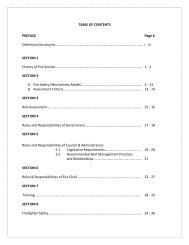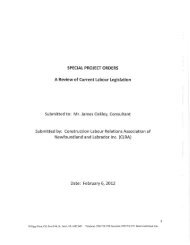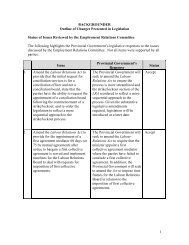Basic Level Pre-Course Reading
Basic Level Pre-Course Reading
Basic Level Pre-Course Reading
Create successful ePaper yourself
Turn your PDF publications into a flip-book with our unique Google optimized e-Paper software.
Chapter 4<br />
Personal Protection<br />
Thinking Question<br />
What level of protection does your current standard PPE offer you?<br />
4.6 Respiratory Protection<br />
Respiratory Protection is critical for first responders. Many CBRN materials are<br />
undetectable to the human senses and can affect people most acutely through<br />
inhalation. Many different respiratory systems exist, ranging from the maximal protection<br />
offered by SCBA, to minimal protection offered in paper filtered dust masks.<br />
Responders must be trained in the use of their respiratory equipment and must remain<br />
diligent to use it only within its limitations. Respirators and filters should be specifically<br />
tested and approved for CBRN agents.<br />
As discussed earlier in this chapter, responders must use an All Hazards Approach<br />
when considering PPE. As applied to respiratory protection, it must be assumed that<br />
dangerous levels of CBRN materials exist, at least until appropriate and comprehensive<br />
agent detection can be conducted. Only specialized responders equipped with <strong>Level</strong> A<br />
suits, complete with SCBA, have adequate protection to work in unknown environments.<br />
Responders with less than this level of protection should use the protection equipment<br />
they have and remain at a safe distance. Chapter 5 will outline how perimeters and<br />
hazard zones are established. Generally, respiratory protection requirements are linked<br />
to these zones.<br />
The respiratory protection provided by gas masks and filter systems can be adequate<br />
but this depends on analysis of the contamination and proper use of equipment in<br />
accordance with established zones.<br />
4.7 Risks of Operating in PPE at CBRN Incidents<br />
PPE does not provide protection without a cost. Wearing protective clothing can be<br />
very taxing on responders. It is important to understand that the response to a CBRN<br />
incident can extend over a long period of time. Some protective equipment is designed<br />
to address traditional emergencies that are most often handled over a short time period.<br />
CBRN First Responder Training Program<br />
40<br />
<strong>Basic</strong> <strong>Level</strong> <strong>Course</strong>



